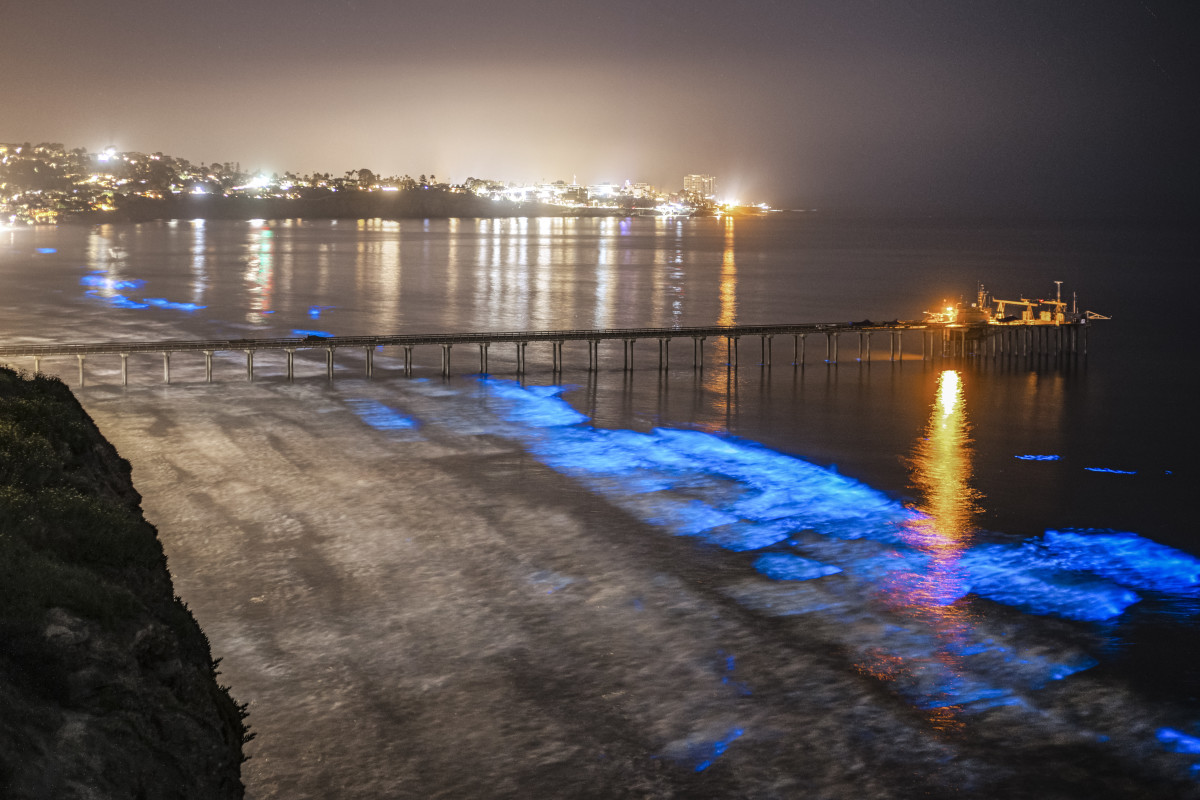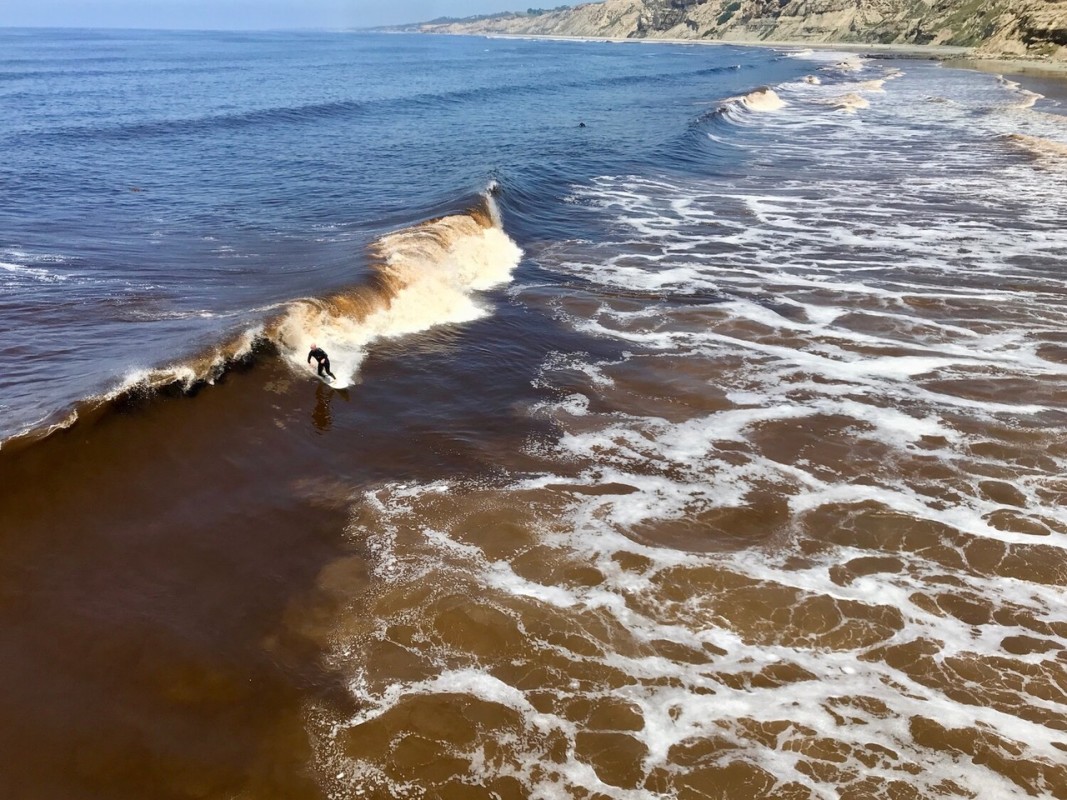
Kevin Key via Getty Images
The spring of 2020 saw one of Southern California’s most prolific red tides on record, and while the bioluminescence left beaches from Santa Barbara down through Baja California with ravishing visual displays at night, the algal inundation – more of a chocolate-brown than a crimson-red– resulted in graver consequences for many creatures within it.
Red tides are notorious for causing grandiose algal blooms (in this case, of the dinoflagellate Lingulodinium polyedra), then sucking up all of the oxygen in the water and leaving for dead everything from small invertebrates to any fish unfortunate enough to be in the area at the time. Last week week, a multi-institutional team of researchers led by UC San Diego Scripps Institution of Oceanography and National Oceanic and Atmospheric Administration (NOAA) published a report on a several-years-long study in the academic journal Elementa, identifying deteriorating water quality.
The 2020 incident saw mass mortality among snails, topsmelt, round stingray, sarcastic fringehead, sanddabs, rockfish, and thornback guitarfish. Marine mammals were spared, it seems, with no more reported strandings than usual – probably because they were able to bail out and away from the bad water.
Related: Study Shows Ocean May Be Spitting Toxins Back at Us
What does that mean for land-based surf-going mammals? Should we worry? Should we stay out of the water? We asked NOAA Southwest Fisheries Science Center marine biologist and lead author of the report, Zachary Skelton, whether we should take caution, or stay out of the ocean altogether during the next red tide.
“I want to emphasize that we just don’t know much about the health effects of these blooms because they are hard to predict and thus to systematically study,” he said, refraining from making any sweeping claims. But, he went on, “For those reasons, I would urge caution to surfers and water goers.”

Courtesy of UCSD
Specifically, Skelton added, “There has been anecdotal evidence that past red tides from Lingulodinium polyedra have caused minor allergic responses in some humans. Obviously, surfing in such conditions would likely increase the risk for exposure but to my knowledge there has been no widespread study on the health effects caused by this specific type of bloom. There was a study at UC San Diego that tried to examine the mechanisms behind the allergic responses but they were unable to uncover the specific causes.”
What’s a little skin rash? Should we tell everyone else to stay out of the water and take advantage of the unusually vacant lineups?

Mike Latz/UCSD
“This phytoplankton (L. polyedra) also produces yessotoxin which potentially could cause harm upon ingestion but the concentrations of the bloom were quite low and likely would have had little effect on humans,” Skelton explained somewhat ambiguously. “All in all, I would say yes that surfing in these types of red tides (L. polyedra blooms) can potentially lead to allergic responses or increased risk of infection due to the high concentrations of bacteria that are associated with bloom dynamics.” Thankfully, according to Skelton, the species does not tend to be as harmful to humans as other algal bloom species, though noted that he “would personally not recommend swimming in the bloom. But that is up to the person. More up to date information on California red tides can be found here.”
So what are our two cents on the matter? Surf at your own risk, as always. Decide whether the surf is worth it and then play your luck wisely or just as you will. Far as we’re concerned, we’ll err with caution when the waves are on the squabbly side, and when it’s firing, we’ll throw it to the wind. But you can bet all the oxacillin, vancomycin, and all the rest of the -cillans and -mycins in the world that we’ll be booking it straight to the shower for an industrial-grade scrubbing when we get home.

